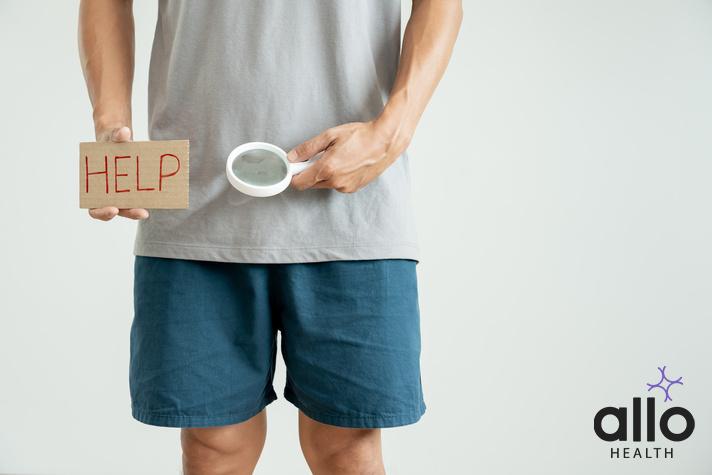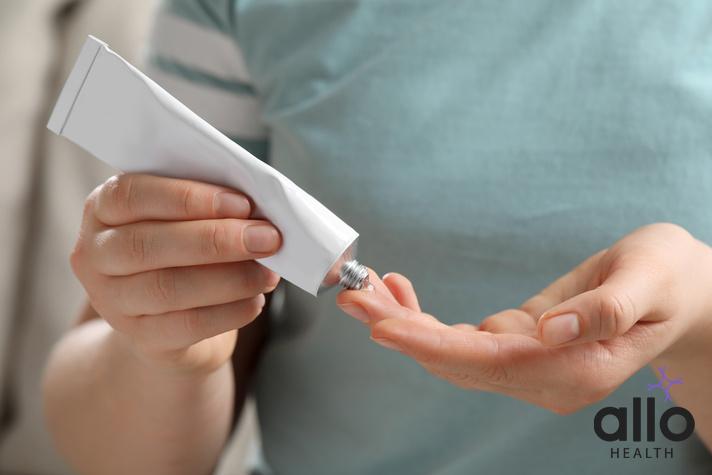How to Break Penis Seal?

"The following blog article provides general information and insights on various topics. However, it is important to note that the information presented is not intended as professional advice in any specific field or area. The content of this blog is for general educational and informational purposes only.
Book consultation
The content should not be interpreted as endorsement, recommendation, or guarantee of any product, service, or information mentioned. Readers are solely responsible for the decisions and actions they take based on the information provided in this blog. It is essential to exercise individual judgment, critical thinking, and personal responsibility when applying or implementing any information or suggestions discussed in the blog."
Penile adhesions, often referred to as a “penis seal,” can be a concern for some men. This condition involves the skin of the foreskin sticking to the penis head, leading to discomfort and health concerns. This article will give a better understanding of this condition and how to break penis seal.
What is Penis Seal or Penis Adhesions?
Penis seal, also known as penile adhesion, is a medical condition where the foreskin of the penis becomes adhered or stuck to the glans (penis head). This condition can occur in both circumcised and uncircumcised penises, but it is more common in the latter. Adhesions can vary in severity, ranging from minor penile adhesions to more severe cases like skin bridges, where the skin forms a permanent bridge between the foreskin and the glans.
Types of Penis Seal
Penis seal, also known as penile adhesions, refer to conditions where the skin of the foreskin adheres to the penis head or shaft.
- Glansular Adhesion: This is when the foreskin becomes attached to the glans (head of the penis). It’s a common type of adhesion, especially in uncircumcised penises or after circumcision.
- Skin Bridges: These are more severe forms of adhesions where the skin forms a permanent bridge between the foreskin and the glans. They often result from circumcision or injury and may require surgical removal.
- Foreskin Bands or Cords: These refer to tight bands of foreskin tissue that restrict the normal movement of the foreskin over the penis head. They can lead to non-retractile foreskin and may cause painfully tight foreskin.
- Minor Penile Adhesions: These are less severe and often occur in young children. They can resolve spontaneously over time, especially with spontaneous erections that help in stretching the foreskin.
- Non-Vascularized Adhesions: These adhesions involve tissues that do not have a significant blood supply, which can make them easier to treat compared to vascularized adhesions.
- Adhesion Formation due to Medical Conditions: Conditions like balanitis (inflammation of the glans) or post-operative adhesions from circumcision can lead to the formation of penile adhesions.
Each type of penis seal may require a specific approach for treatment, ranging from gentle treatment methods like topical steroid creams and foreskin stretching exercises, to more invasive procedures like adhesion removal surgery or circumcision revision.
Note: It’s important for individuals experiencing any signs of penile adhesions to seek medical advice for an accurate diagnosis and appropriate treatment plan.
Causes and Risk Factors
Penis adhesions, where the skin of the foreskin sticks to the glans or penis head, can be caused by a variety of factors.
Medical Conditions
- Non-Retractile Foreskin: Common in children, this condition can lead to adhesions if the foreskin remains non-retractable over time.
- Phimosis: A condition where the foreskin is too tight to be pulled back from the head of the penis, leading to adhesions.
- Penile Frenulum Tear: A tear in the frenulum, the tissue connecting the foreskin to the penis head, can lead to adhesions during the healing process.
Injuries and Trauma on Penis
- Rough Sexual Intercourse: Rough or dry sexual activities can cause minor injuries or tears, leading to adhesions.
- Contact Sports: Physical trauma from sports can result in penile injuries that develop into adhesions.
- Infected or Deep Tears of Penis: Wounds on the penis that become infected or are deep can heal improperly, forming adhesions.
Infections
- Urinary Tract Infections: These can cause inflammation and lead to the foreskin adhering to the glans.
- Fungal Infection: Yeast or other fungal infections can cause inflammation and result in adhesion formation.
- Infection-Related Scarring: Any infection that leads to scarring can result in adhesions as the scar tissue forms.
Improper Care
- Lack of Foreskin Cleanliness: Not cleaning the foreskin properly can lead to infections and subsequent adhesions.
- Forceful Foreskin Retraction: Forcibly pulling back the foreskin, especially in children, can cause tears and lead to adhesions.
Surgical Procedures
- After Circumcision: Complications or improper healing after these procedures can result in adhesions.
- Use of Surgical Glue: In some procedures, the use of surgical glue can inadvertently cause adhesions if it adheres to the glans.
Due to Other Factors
- Spontaneous Erections: In some cases, frequent or vigorous erections can stress the foreskin, leading to minor tears and adhesions.
- Blood Flow Concerns: Compromised blood flow to the penis can affect healing and increase the risk of adhesions.
Understanding these causes is crucial for preventing and properly treating penile adhesions.
Note: It’s always recommended to seek medical advice for accurate diagnosis and treatment options.
When to Consult a Doctor?

When dealing with penile adhesions, it’s essential to know when to consult a doctor. Here are key indicators:
- Persistent Symptoms: If non-retractile foreskin, tightness, or adhesions don’t improve with gentle treatment such as topical steroid creams, foreskin stretching exercises, or warm water soaks.
- Signs of Infection or Inflammation: Redness, swelling, discharge, or increased sensitivity indicating a possible infection or inflammation. This could range from a common infection to more serious concerns like infection cancer.
- Pain and Discomfort of Penis: If there’s pain during urination, sexual intercourse, or spontaneous erections, indicating the adhesions might be causing more serious concerns.
- Blood Spots or Tears on Penis: Indications of a deep tear, infected tear, or a penile frenulum tear, which can affect blood flow or lead to more significant damage if not treated.
- Non-Improvement with Initial Treatments: If conditions like phimosis with steroid creams don’t show improvement, or if there’s no change even after applying numbing cream or hydrocortisone cream.
- Concerns about Penis Size, Shape, or Function: Any worries related to penis size, lumps, or overall function should be addressed by a medical professional.
- Before Considering Surgical Options: Before proceeding with treatments like circumcision revision, surgical glue application, or adhesion removal surgery.
- If Advised by a Healthcare Professional: Anytime a healthcare provider suggests a consultation, especially when discussing treatment options or potential medical treatment.
Remember, timely consultation can lead to more effective and less invasive treatment procedures.
Treatment Options

Treatment options for penile adhesions vary based on the severity and type of adhesion. These options range from conservative methods to surgical interventions.
Topical Treatments
- Topical Steroid Cream: Applying a steroid cream like hydrocortisone can reduce inflammation and aid in gently detaching the adhesions.
- Antibiotic Cream: If there’s an associated infection, an antibiotic cream might be prescribed.
- Numbing Cream: Used to reduce discomfort during manual adhesion separation.
Surgical Interventions
- Adhesion Removal Surgery: In cases where seals are severe, surgical removal might be necessary.
- Circumcision or Circumcision Revision: Sometimes, circumcision or a revision of a previous circumcision is recommended, especially for persistent or recurrent adhesions.
- Use of Surgical Glue in Minor Cases: For minor seal, a quick procedure using surgical glue can be effective.
Special Considerations
- Treating Non-Retractile Foreskin: If the foreskin is non-retractile due to adhesions, gradual stretching and topical treatments are often first-line approaches.
- Phimosis Treatment: In cases of phimosis (tight foreskin), steroid creams can be particularly effective.
- Post-Treatment Care: Post-procedure care is crucial, especially to avoid recurrent adhesions or infections.
It’s important to remember that while these treatments can be effective, each case is unique.
Note: The choice of treatment should be based on individual medical advice, considering the specific type of adhesion and the patient’s overall health.
Preventive Measures and Care
Preventive measures and care for penis seal, particularly in uncircumcised individuals, involve a combination of proper hygiene, gentle handling, and awareness of potential concerns.
Regular Foreskin Cleaning
- With Soap and Warm Water: Gently clean the foreskin and penis head with soap and warm water to prevent infections and adhesion formation.
- Foreskin Retractable Without Pain: Ensure that the foreskin can be retracted without pain or discomfort during cleaning.
Avoiding Over-Retraction
- Non-Retractile Foreskin in Children: In young children, avoid forcibly retracting the foreskin, as it can lead to tears and subsequent adhesions.
- Gentle Treatment: Always handle the foreskin gently to prevent painful tears or damage.
Safe Sexual Practices
- Avoiding Injury During Intercourse: Ensure safe and gentle practices to prevent penile injuries that might lead to adhesions.
Aftercare for Surgical Interventions
- Post Circumcision Care: If circumcision or circumcision revision is performed, follow the doctor’s aftercare instructions meticulously.
- Healing Time Considerations: Allow adequate time for any surgical areas to heal properly.
Avoiding Trauma on Penis
- Contact Sports Precautions: Wear appropriate protective gear during sports to avoid penile injuries.
- Caution with Quick Procedures: Be cautious with any quick medical procedures around the genital area to avoid accidental adhesions.
By adhering to these preventative measures and care guidelines, the risk of developing penile adhesions can be significantly reduced.
Note: It’s important to maintain good hygiene, handle the foreskin gently, and seek medical advice when necessary to ensure proper penile health.
Conclusion
Penis seal, while concerning, are often treatable with proper care and medical advice. Understanding the condition, its types, and the available treatment options can help in managing this condition effectively. Remember, when in doubt, seeking medical advice is the best course of action.
Most Asked Questions
-
What is a penis seal and how do I know if I have it?
Penis seal or penis adhesions is when your foreskin sticks to the head of your penis, making it hard to move or pull back. You might notice it’s tough to pull back your foreskin, feel pain during activities like going to the bathroom or having sex, or see skin connecting your foreskin and penis head.
-
Can I use creams to break penis seal?
Yes, creams like topical steroid cream, hydrocortisone, or antibiotic cream can help. They make the skin softer and less sticky, which can help loosen the adhesion. But it’s very important to talk to a doctor first before trying any cream.
-
Should I try to separate the adhesion myself?
It’s best not to try this on your own because you might hurt yourself. Instead, soaking the area in warm water can gently help loosen the adhesion. If you’re not sure what to do, always ask a doctor for the safest way to handle it.
-
What if creams and warm water don’t work?
If these methods don’t help, your doctor might suggest other treatments. This could be minor surgery to carefully remove the adhesion. It’s a quick procedure, but it should only be done by a medical professional to avoid any damage or pain.







































